February 6, 2019
Search Results for: office design
February 1, 2019
Millennial headlines, eternal workplace truths, the pathologisation of sitting and some other stuff
by Mark Eltringham • Facilities management, Features, Technology, Wellbeing, Workplace design
 The New York Times asked an interesting question this week. “Why Are Young People Pretending to Love Work?” it demanded, begging the immediate response ‘for the same reason everybody else does’. If only that pat, facetious response were enough to satisfy the actual questions concealed by the typically misleading headline. What the article actually wants to know is why some members of one particular tribe of young people have a toxic relationship with work. And that tribe (of course) is made up of the diverse, attractive, urbanite, coffee-fixated, stock image Millennials working for the world’s tech giants. Interesting in so far as it goes, but this tribe is not homogeneous to begin with and does not represent the world’s ‘young people’. It’s beyond time we stopped working on the basis that it does. Change the headlines.
The New York Times asked an interesting question this week. “Why Are Young People Pretending to Love Work?” it demanded, begging the immediate response ‘for the same reason everybody else does’. If only that pat, facetious response were enough to satisfy the actual questions concealed by the typically misleading headline. What the article actually wants to know is why some members of one particular tribe of young people have a toxic relationship with work. And that tribe (of course) is made up of the diverse, attractive, urbanite, coffee-fixated, stock image Millennials working for the world’s tech giants. Interesting in so far as it goes, but this tribe is not homogeneous to begin with and does not represent the world’s ‘young people’. It’s beyond time we stopped working on the basis that it does. Change the headlines.
January 23, 2019
Landsec becomes latest major property firm to offer coworking space
by Mark Eltringham • Company news, Coworking, Property
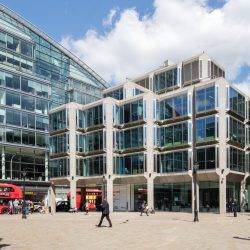 Landsec has launched its new flexible office brand, Myo, which it claims will provide customised office space for businesses looking for flexibility to enable future growth from April of this year. Coworking in other words. The move is the latest example of a major commercial property firm entering the market for flexible offices and coworking space in the wake of its recent boom. Myo will operate as a standalone brand, offers flexible leases ranging from 12 months to three years for businesses that need space for between 15 and 80 people.
Landsec has launched its new flexible office brand, Myo, which it claims will provide customised office space for businesses looking for flexibility to enable future growth from April of this year. Coworking in other words. The move is the latest example of a major commercial property firm entering the market for flexible offices and coworking space in the wake of its recent boom. Myo will operate as a standalone brand, offers flexible leases ranging from 12 months to three years for businesses that need space for between 15 and 80 people.
November 28, 2018
Line up of speakers announced for Workplace Trends: Research Spring Summit
by Maggie Procopi • Events, Facilities management, News, Technology, Workplace design
 The research-driven Workplace Trends Spring Summit returns for 2019. We have two sessions with invited guest speakers, our keynote and the after lunch debate. Following a recent Call for Abstracts and a blind peer review by our two moderators for the day, Nigel Oseland (Workplace Unlimited) and Mark Eltringham (Workplace Insight), the remaining sessions have now been filled with the highest ranked submissions.
The research-driven Workplace Trends Spring Summit returns for 2019. We have two sessions with invited guest speakers, our keynote and the after lunch debate. Following a recent Call for Abstracts and a blind peer review by our two moderators for the day, Nigel Oseland (Workplace Unlimited) and Mark Eltringham (Workplace Insight), the remaining sessions have now been filled with the highest ranked submissions.
October 19, 2018
Smart spaces and the other top technology trends for 2019
by Mark Eltringham • News, Technology, Workplace design
 Technology researcher Gartner has highlighted the top strategic technology trends it believes organisations should be aware of in 2019. Gartner defines a strategic technology trend as one with ‘substantial disruptive potential that is beginning to break out of an emerging state into broader impact and use, or which are rapidly growing trends with a high degree of volatility reaching tipping points over the next five years’. One of the interesting points to note is the inclusion of the physical workplace yet again, as we highlighted in our recent feature on the trends shaping office design.
Technology researcher Gartner has highlighted the top strategic technology trends it believes organisations should be aware of in 2019. Gartner defines a strategic technology trend as one with ‘substantial disruptive potential that is beginning to break out of an emerging state into broader impact and use, or which are rapidly growing trends with a high degree of volatility reaching tipping points over the next five years’. One of the interesting points to note is the inclusion of the physical workplace yet again, as we highlighted in our recent feature on the trends shaping office design.
October 10, 2018
The Genesis of ideation and the places we go to have our best ideas 0
by Giuseppe Boscherini • Facilities management, Features, Technology, Work&Place, Workplace design
 Because collaboration, creativity and innovation are increasingly perceived as key objectives and differentiators of performance, the genesis and mechanisms behind ideation and creativity are an an integral part of both business and personal development. As a consequence, there is growing interest in the way the physical attributes of work settings may influence or even trigger creative behaviour. The cliché of the shower as one of these favourite places comes to mind and yet experience does show that the idea of seeking a setting, a “zone” if you will, for a specific purpose is intuitively right. This needn’t be a retreat or cocoon, as is often assumed, but can also be a crowded, busy, noisy place, which might explain why so often the most animated work conversations move out of the office shop into the coffee shop. Equally, highlight events or special meetings tend to be held in a “venue’, often dressed for the occasion.
Because collaboration, creativity and innovation are increasingly perceived as key objectives and differentiators of performance, the genesis and mechanisms behind ideation and creativity are an an integral part of both business and personal development. As a consequence, there is growing interest in the way the physical attributes of work settings may influence or even trigger creative behaviour. The cliché of the shower as one of these favourite places comes to mind and yet experience does show that the idea of seeking a setting, a “zone” if you will, for a specific purpose is intuitively right. This needn’t be a retreat or cocoon, as is often assumed, but can also be a crowded, busy, noisy place, which might explain why so often the most animated work conversations move out of the office shop into the coffee shop. Equally, highlight events or special meetings tend to be held in a “venue’, often dressed for the occasion.
September 28, 2018
The horrors and harmonies of workplace hierarchy
by Monica Parker • Comment, Technology, Workplace design
 I am a child of the seventies, and one of my favourite shows when I was just a tyke was The Jeffersons. For those not familiar with The Jeffersons, it was about a black family in New York City who had, through ambition and entrepreneurship, ‘made it to the top’. George Jefferson, the patriarch, was a bolshie character. Hijinks usually ensued. But what stuck with me about that show was the catchy theme song, Movin’ On Up. The lyrics were ‘I’m movin’ on up, to the upper east side, to a deluxe apartment in the sky… I finally got a piece of the pie.’ Growing up in suburbia, this was probably the first time that I learned the idea of a penthouse, and the notion that the higher up the building, the more important you were. It wasn’t until I was about age eight that I realised the word wasn’t ‘high-archy’, but ‘hierarchy.’
I am a child of the seventies, and one of my favourite shows when I was just a tyke was The Jeffersons. For those not familiar with The Jeffersons, it was about a black family in New York City who had, through ambition and entrepreneurship, ‘made it to the top’. George Jefferson, the patriarch, was a bolshie character. Hijinks usually ensued. But what stuck with me about that show was the catchy theme song, Movin’ On Up. The lyrics were ‘I’m movin’ on up, to the upper east side, to a deluxe apartment in the sky… I finally got a piece of the pie.’ Growing up in suburbia, this was probably the first time that I learned the idea of a penthouse, and the notion that the higher up the building, the more important you were. It wasn’t until I was about age eight that I realised the word wasn’t ‘high-archy’, but ‘hierarchy.’
September 14, 2018
All those workplace trends lists that you see? We’ve been there before 0
by Mark Eltringham • Comment, Facilities management, Furniture, Workplace design
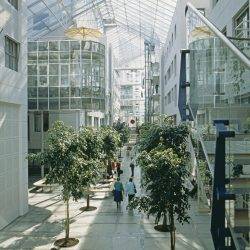 Conference and show season looms and with it arrives the annual swarm of workplace trend forecasts. These are often presented as groundbreaking but many of them are indistinguishable from each other and based on some very familiar tropes and assumptions. These days such things tend to be shaped into lists, because that’s how the Internet likes it. That is all perfectly natural and we are free to make our own mind up which of these features are meaningful and which are hack jobs. No football pundit was ever fired for stringing together clichés rather than thinking and talking, and no marketing person has ever lost their job for publishing a list of Ten Trends.
Conference and show season looms and with it arrives the annual swarm of workplace trend forecasts. These are often presented as groundbreaking but many of them are indistinguishable from each other and based on some very familiar tropes and assumptions. These days such things tend to be shaped into lists, because that’s how the Internet likes it. That is all perfectly natural and we are free to make our own mind up which of these features are meaningful and which are hack jobs. No football pundit was ever fired for stringing together clichés rather than thinking and talking, and no marketing person has ever lost their job for publishing a list of Ten Trends.
September 6, 2018
Creating a productive workplace for people is all about context
by Mark Eltringham • Comment, Facilities management, Workplace, Workplace design
 The quest for a proper understanding of the links between the places we work, the things with which we fill them and our wellbeing and productivity has been ongoing for a very long time. It predates our current thinking on productive workplace design and the facilities management discipline as we now know it by decades and has its roots in the design of early landmark offices such as Frank Lloyd Wright’s Larkin building and research such as that carried out at the Hawthorne Works in Chicago in the late 1920s. Yet the constantly evolving nature of work means that we are forever tantalised by an idea that we can never fully grasp and makes established ideas seem like revelations.
The quest for a proper understanding of the links between the places we work, the things with which we fill them and our wellbeing and productivity has been ongoing for a very long time. It predates our current thinking on productive workplace design and the facilities management discipline as we now know it by decades and has its roots in the design of early landmark offices such as Frank Lloyd Wright’s Larkin building and research such as that carried out at the Hawthorne Works in Chicago in the late 1920s. Yet the constantly evolving nature of work means that we are forever tantalised by an idea that we can never fully grasp and makes established ideas seem like revelations.
September 4, 2018
Don’t stand so close to me: why personal space matters in the workplace 0
by Paul Goodchild • Comment, Wellbeing, Workplace design
 As successive BCO Specification Guides and the research of organisations like CoreNet Global have proved, the spatial dynamics of offices have changed dramatically in recent years. Put simply, the modern office serves significantly more people per square foot than ever before. Originally this tightening was largely down to the growing ubiquity of flat screen and the mobile devices, but more recently the major driver of change appears to be the gradual disappearance of personal workstations in favour of more shared space.
As successive BCO Specification Guides and the research of organisations like CoreNet Global have proved, the spatial dynamics of offices have changed dramatically in recent years. Put simply, the modern office serves significantly more people per square foot than ever before. Originally this tightening was largely down to the growing ubiquity of flat screen and the mobile devices, but more recently the major driver of change appears to be the gradual disappearance of personal workstations in favour of more shared space.
July 19, 2018
When it comes to change management, culture sometimes eats strategy for breakfast
by Gary Chandler • Features, Flexible working, Workplace design
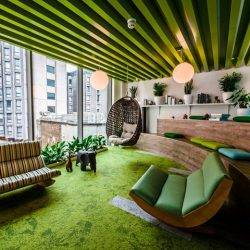 21st Century organisations are under constant pressure to evolve. They are beset by a number of forces that demand they change constantly. These include the need to restructure the organisation, adapt to new technologies, respond to competitors and changes in the economy and legislative environment. Inevitably, this constant need to change affects both people and the built environment in very profound ways. However, according to a study of Culture and Change Management published by the Katzenbach Center, only around half of all transformation initiatives meet their objects over time. Among the biggest obstacles to successful change management cited by the study is change fatigue, which is characterised by a lack of empathy and a widespread failure to engage with the change process.
21st Century organisations are under constant pressure to evolve. They are beset by a number of forces that demand they change constantly. These include the need to restructure the organisation, adapt to new technologies, respond to competitors and changes in the economy and legislative environment. Inevitably, this constant need to change affects both people and the built environment in very profound ways. However, according to a study of Culture and Change Management published by the Katzenbach Center, only around half of all transformation initiatives meet their objects over time. Among the biggest obstacles to successful change management cited by the study is change fatigue, which is characterised by a lack of empathy and a widespread failure to engage with the change process.




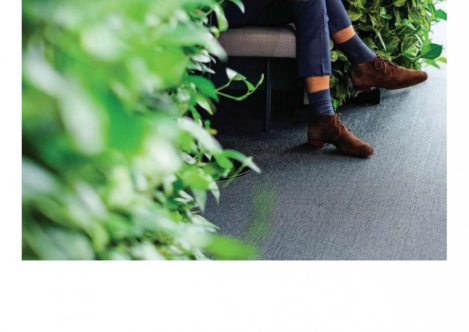

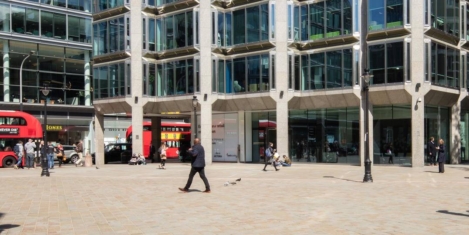
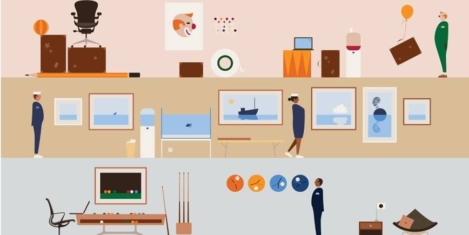
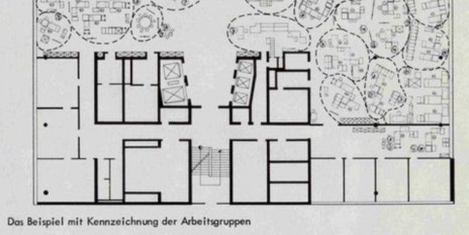
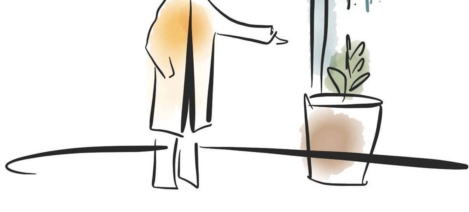

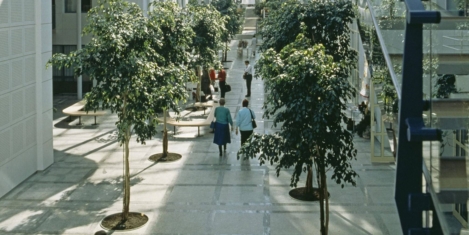


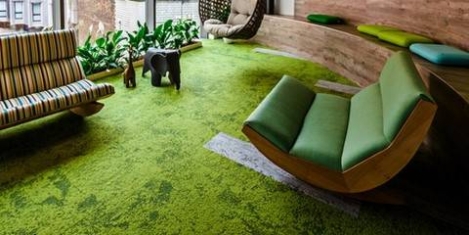










November 30, 2018
How the way we interact with technology is changing the way we think
by Charles Marks • Comment, Technology, Workplace design
More →